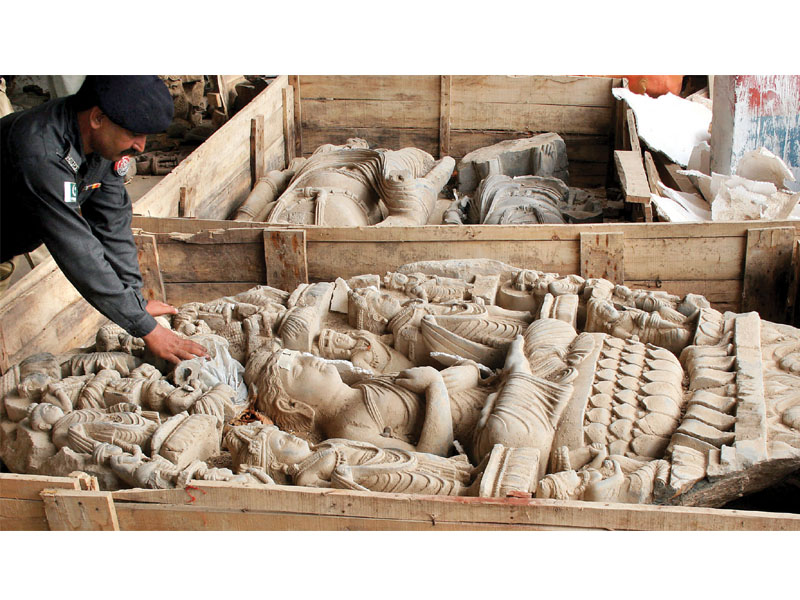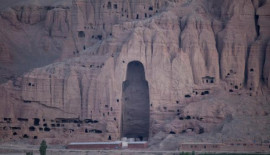
“Identification of the site and the feasibility of [exploring] it goes through different stages. In the case study of Bhanbhor, the [feasibility study] exceeds expectations of the excavation,” he explained while speaking at a session of the ‘When History, Archaeology and Science Meet to give Life and Voice to Monuments and Archaeological Evidence’ workshop, organised by the Sindh department of culture in collaboration with the Italian consulate.
“In recent times, we have found bones and ivory, as well as baked clay moulds for coins.”
Particularly thankful to the previous maps and stories written by various explorers, he said, “The [most] important work rose in the form of detailed maps, however, most of the region could be under the riverbed, as the Indus Delta changed it course over the centuries.”

As far as Manassero’s work is concerned, he is an industrial or urban archaeologist and does not specialise in water archaeology.
Showing images from the current site, he showed camels wandering and elevated mounds indicating that the site was indeed historical. “In the most recent excavations, we found three graves and the skeleton of a man in one of the graves. Besides this, [we also found] a four-wall room created from a pile of stones, [but] how they died, via conquest or an earthquake, remains unknown,” said Manassero.
He also disclosed that he has found pins, various types of beads and other metal objects from the ruins.
Makran is the cradle of ancient civilisation
Makran is the cradle of ancient civilisation, stated Italian professor of archaeology, Valeria Piacentini, during the inaugural session of the three-day workshop on Wednesday.
“This is a country filled with antiquities,” she said. “I have been working on monuments in Sindh for the past eight years. Pakistan offered a different and difficult environment altogether over the years,” she said while commenting on her experiences while visiting the country.
“In digging out facts, I found Makran to be the cradle of ancient civilisation. It’s almost 6,000 years old,” she said, claiming that her team was not visiting just to dig a trench, but rather plans to go deeper and find what lies beneath the surface.
“Let Makran’s soil remain soft and fertile and let the young generations know which [excavations] took place in the past,” she said, while asserting that she and her team were scared of overexploiting the water resources in the area.
The age-old Harappa civilisation too shows an impressive culture, she said, believing that archaeology without history is nothing. “It [history] gives voices to the stones,” she said.
In awe of the coexistence of the people of that era, Professor Piacentini said that they had left behind a legacy for us to follow.
Published in The Express Tribune, November 11th, 2016.
















1714131462-0/WhatsApp-Image-2024-04-26-at-4-21-45-PM-(1)1714131462-0-270x192.webp)







1714024018-0/ModiLara-(1)1714024018-0-270x192.webp)









COMMENTS
Comments are moderated and generally will be posted if they are on-topic and not abusive.
For more information, please see our Comments FAQ